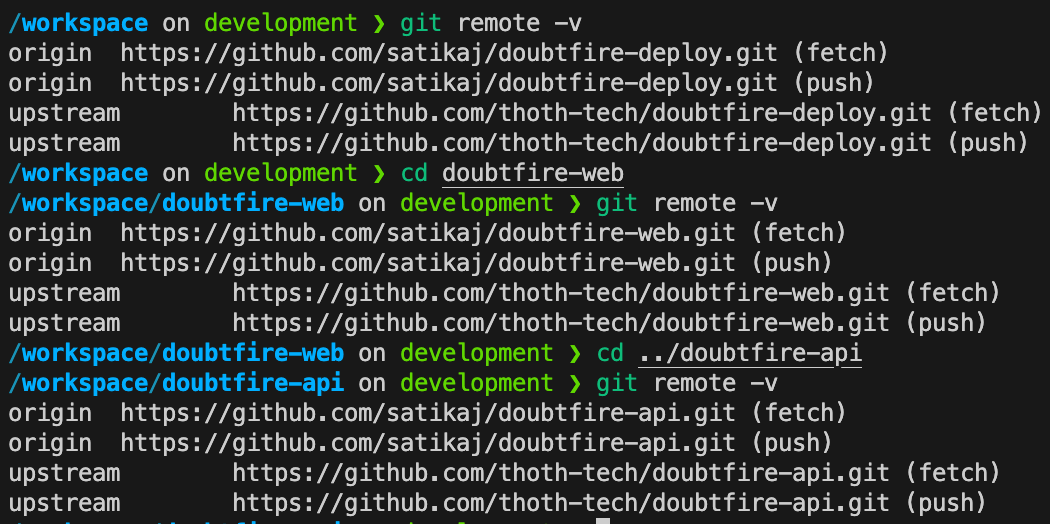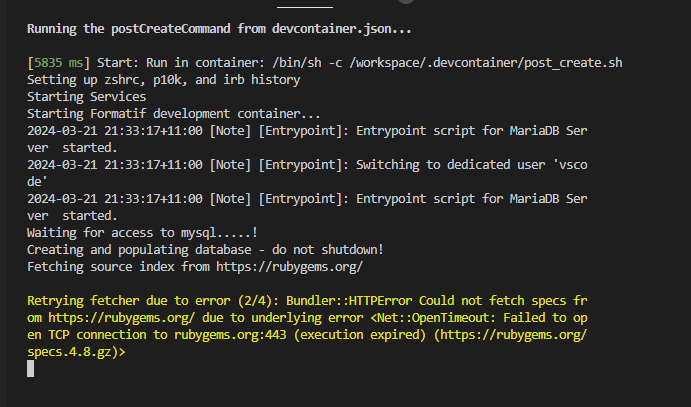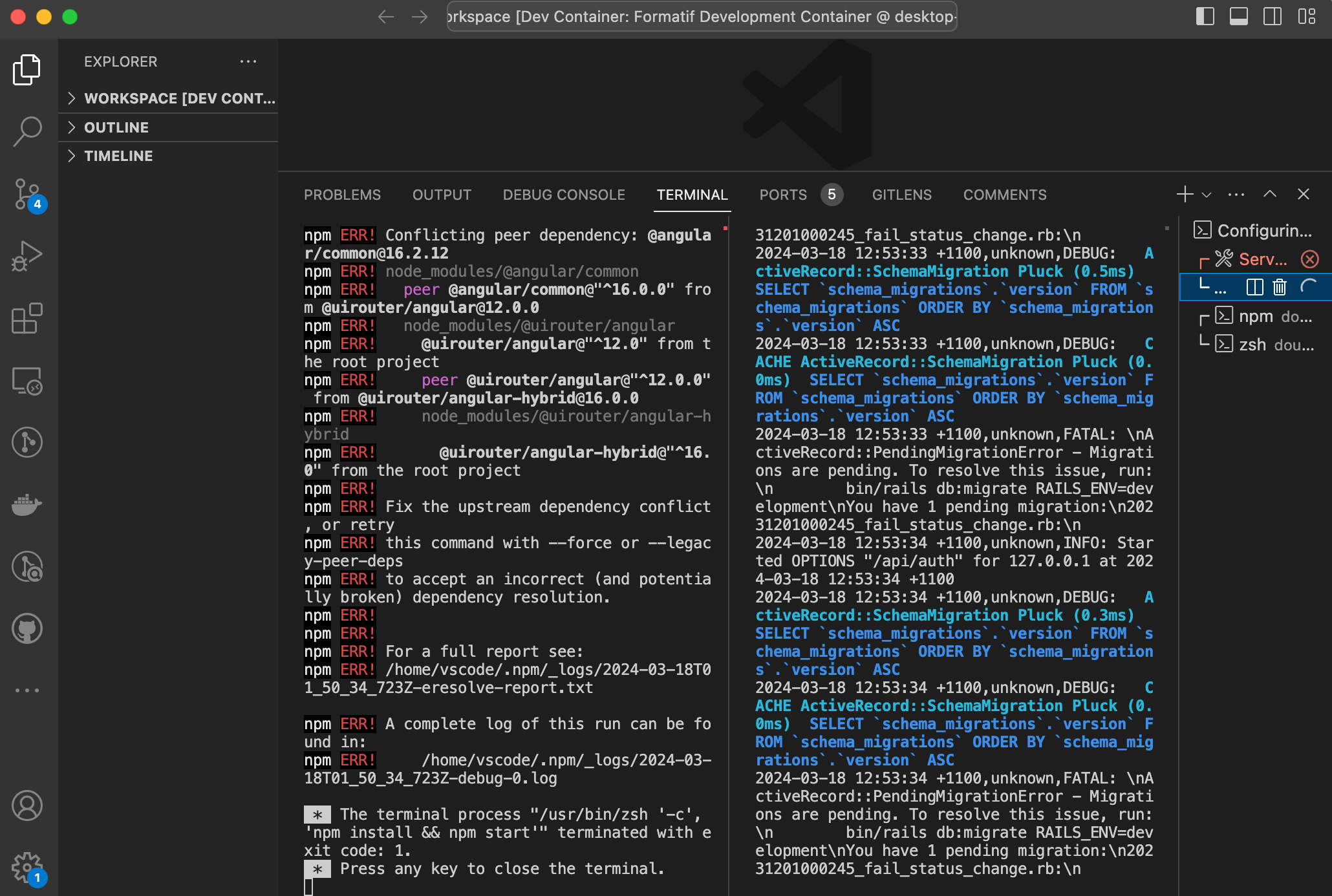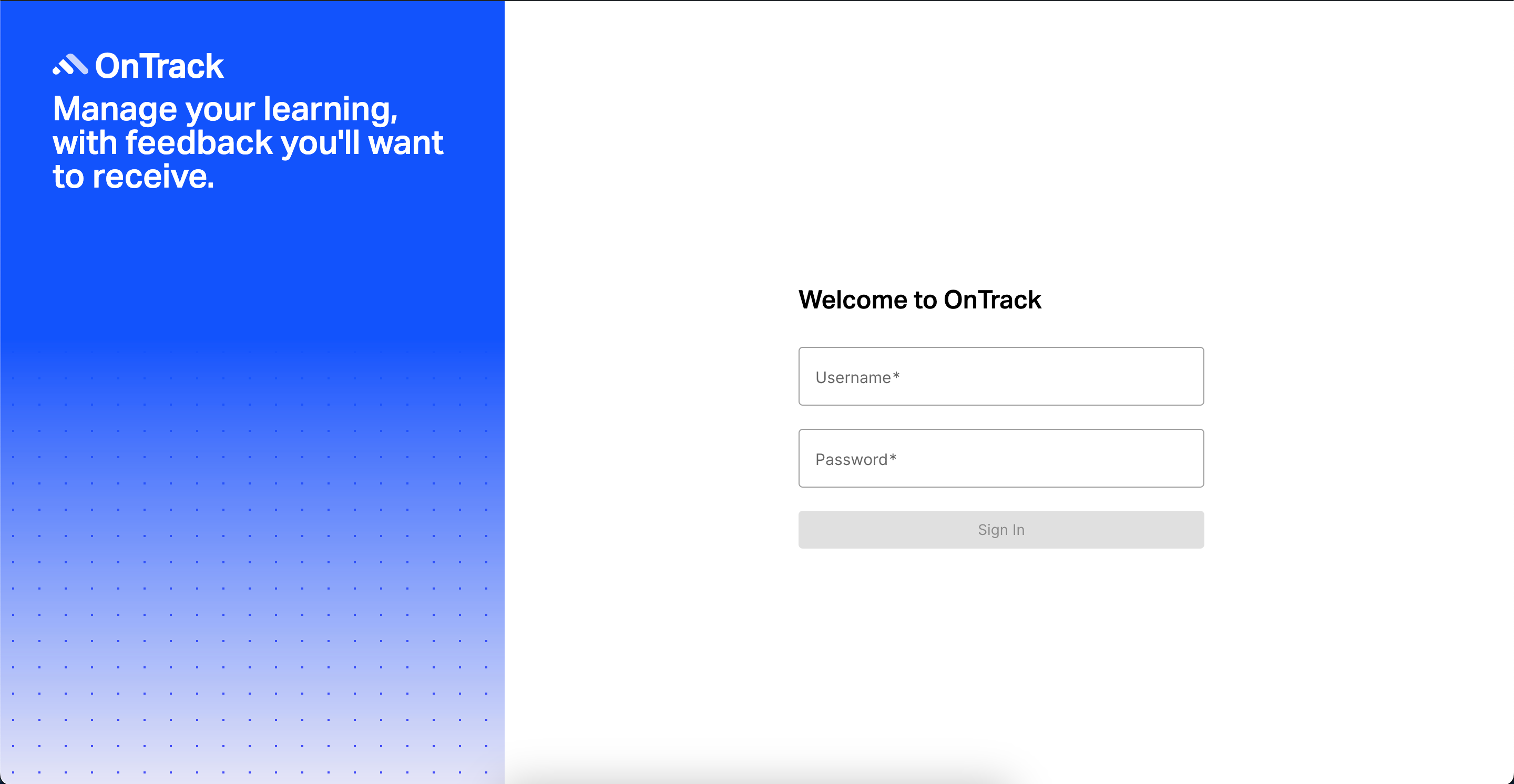Getting Started Contributing
Ontrack Libraries
The OnTrack system consists of a Ruby On Rails backend using the Grape API framework, and an Angular 17 and TailWindCSS frontend. Currently, the frontend is in the process of a migration from a AngularJS and Bootstrap 3.4 to this new structure.
Version Control
At ThothTech, we use Git as our version control system, with our repositories being stored on GitHub. This allows for easily collaboration and code storage for such a large and complex system. The OnTrack system is stored within 3 repositories:
- doubtfire-web contains the frontend
- doubtfire-api contains the backend
- doubtfire-deploy is used to manage deployments and releases
While working on the OnTrack system, you will mainly be operating within the doubtfire-web and doubtfire-api repositories.
These 3 linked repositories are owned by ThothTech and are the ones that you will fork to make your changes. When your changes are approved, they will be merged into these repositories and can later be merged upstream into the doubtfire-lms series of repositories. The doubtfire-lms repositories contain all changes that have been accepted.
Development Container
While working with the OnTrack system, we use a development container. This container includes all the previously listed repositories under one download, and enables you to easily run the OnTrack system. Details on how to set up and run the development container can be found in the Doubtfire contributing guide.
Running the Dev Container
To run the dev container, first you must get the Docker Engine running and open the
doubtfire-deploy folder in a dev container using VS Code’s Command Palette (ctrl / cmd + shift +
p) command Dev Containers: Open Folder in Container...
Make sure the branch is development and the git remotes are configured properly. It should look something like this for all 3 repos (doubtfire-deploy, doubtfire-web, doubtfire-api):

Origin should point to the fork that you have created and upstream should point to the Thoth Tech repo
Common errors during dev container setup
1. MySQL error in the backend

Solution
Dev container related files are only located in the development branch under .devcontainer. This means if you are on the wrong branch or your container doesn’t recognise the git repository, it won’t find the dev container files and your container won’t be configured properly (your Configuring… terminal would show an error like shown below e.g. post_start.sh was not found.)

On Windows, your Docker workspace won’t recognise the git repository if you don’t configure git to
mark the workspace as a safe directory. If you do a git fetch like shown below, git will alert you
of this and tell you which command to run to fix it. Copy paste that command and run it. After that,
you’ll see the branch name in parenthesis as shown below in red. Do this for all 3 repos to mark
each directory as safe for git operations.

Red means there is a problem with your branch. Ideally the branch name should be in green.
To fix this, run git reset --hard upstream/development for each repo. This is assuming you have
fetched the latest changes for each repo using git fetch and you are on the development branch.
Run git status to make sure everything’s up to date and there are no pending changes.
Then without closing the remote connection to the container, rebuild the container using the Command
Palette command (ctrl / cmd + shift + p) Dev Containers: Rebuild Container.
2. Docker container related errors
Firstly, make sure to check for pending updates for Docker.
Now, sometimes if you are having any weird Docker container related problems such as shown below, you might need to delete all Containers, Images, and Volumes related to doubtfire-lms/formatif from inside the Docker app and restart the Docker Engine.

After you have restarted the docker engine, you can then open the doubtfire-deploy folder in VS Code using the Command Palette command Dev Containers: Open Folder in Container…
3. Frontend not starting
Typically, if the frontend fails to start it means that you are missing the required packages. This
can be resolved by opening a new terminal in the doubtfire-web directory and running the command
npm install -f. Once this command has finished running, run the command npm start to start the
frontend, which can usually be accessed at http://localhost:4200/.
4. Wrong sign in page / frontend errors
Errors that are encountered in the frontend typically show up as alerts that appear at the top right of the page.

Most of the time these will occur due to the backend not working as a result of a migration error, which an example of is shown below:

To fix this, enter the backend terminal and press ctrl + c to end the backend process. Once this process has ended, create a new terminal in the doubtfire-api directory. Run the following commands to fix the migration error and relaunch the backend:
bundle exec rake db:migratebundle exec rake db:populaterails s
Reload the frontend once the backend server is up and running. The correct sign-in page like shown below should appear.

Login with username student_1 and password password and enter 1 as the Student ID/number and sign-in. The dashboard should appear with the enrolled units.
Documentation and Templates
Documentation Repositories
Currently, ThothTech has 2 documentation repositories:
- ThothTech/documentation: For internal docs such as new features being worked on and spike reports etc.
- ThothTech/ThothTech-Documentation-Website: For external docs to introduce the products and policies to new students and assist onboarding.
Templates
While working on the system, you will often be required to write documentation prior to making changes, such as component reviews for a migration, a spike when performing research or even for submitting a pull request. Templates for each of these can be found below:
Your First Task
Currently, the most beginner friendly tasks within the OnTrack system are frontend migrations. These tasks will involve converting an old component that uses AngularJS and Bootstrap 3.4 to a new component that uses Angular 17 and TailWindCSS. The guide for how to perform a frontend migration can be found here.
These migration tasks will give you a good understanding of how the OnTrack system is structured and will provide a good introduction on how to make changes to the system.
Here’s some resources which might help while working on migration tasks:
As always, if you run into any issues while working on OnTrack, feel free to reach out to others in the team. We’re always happy to help!